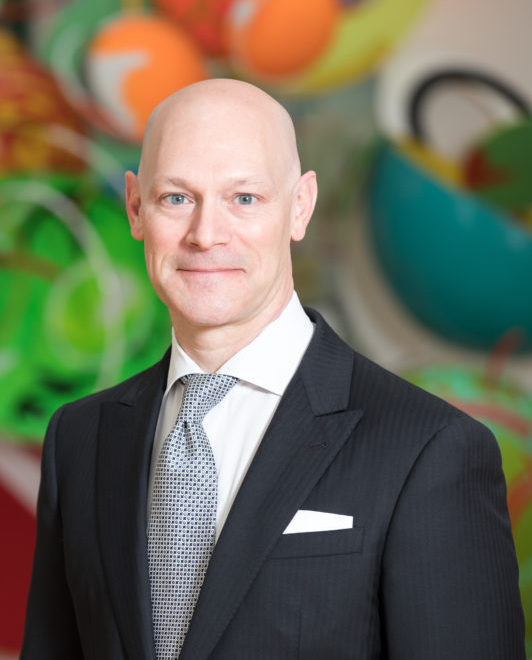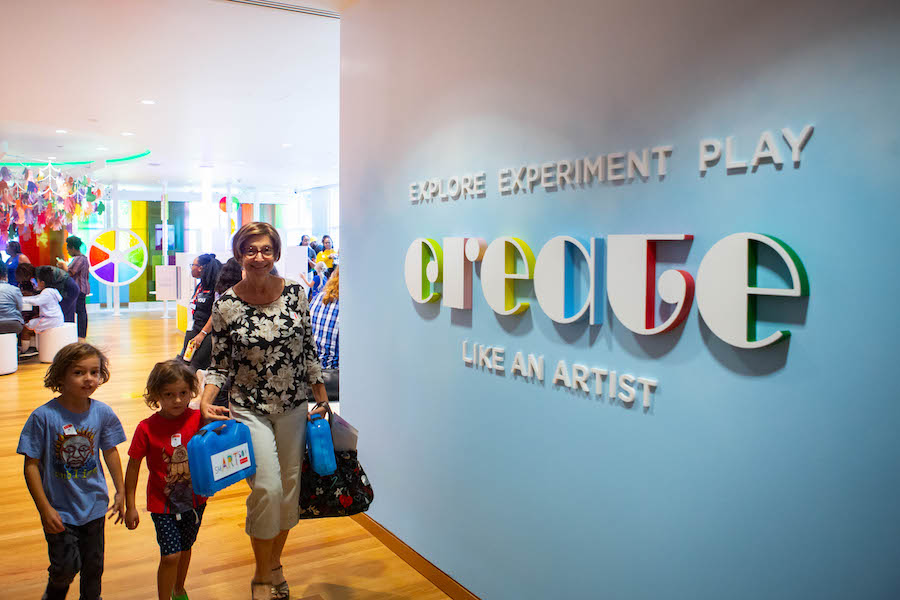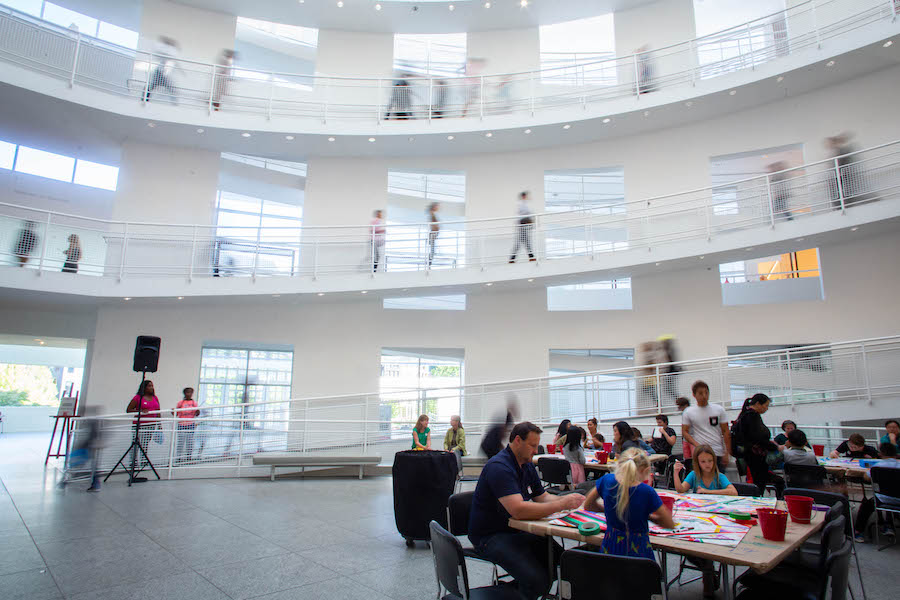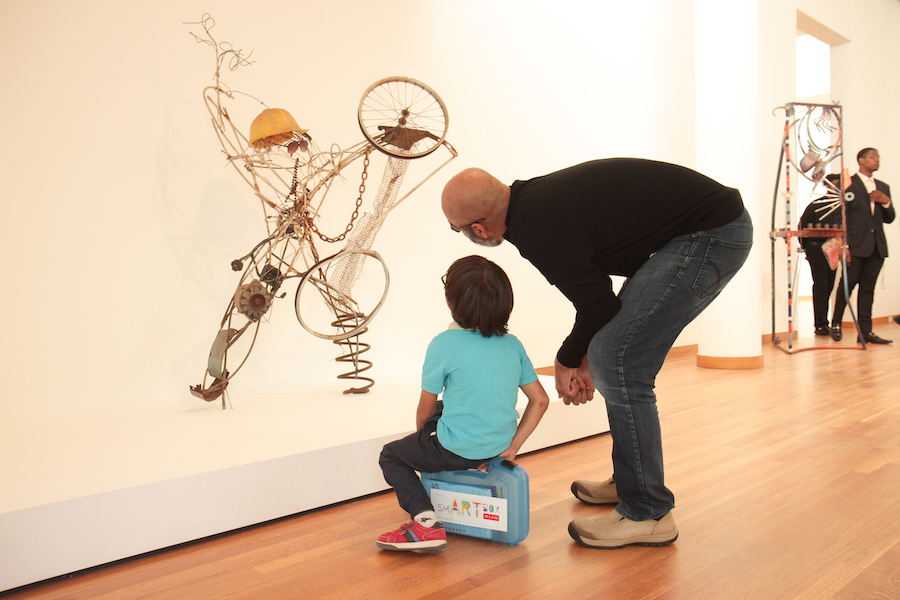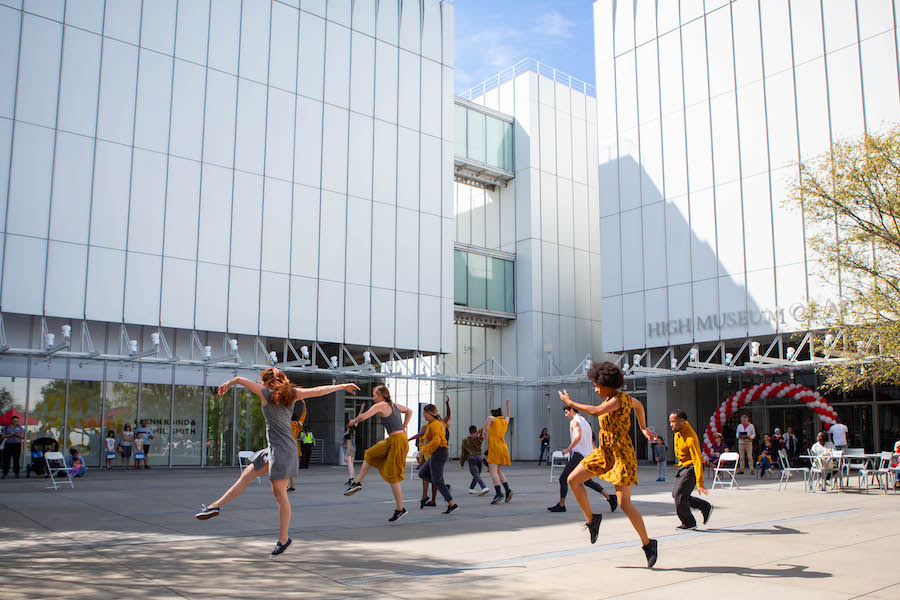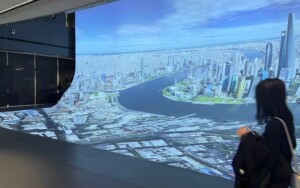Randall Suffolk has been the director of the High Museum of Art since 2015. Previously, he served as director of Philbrook Museum of Art in Tulsa, Oklahoma, and as director of The Hyde Collection in Glen Falls, New York.
Since his arrival at the High Museum, he has championed a renewed commitment to community engagement, focusing on collaboration, inclusivity and access.
In working towards these goals, the museum has reduced admission fees, diversified its exhibition schedule, added to the collection, worked collaboratively with community partners, reinstalled collection galleries, and developed new programming to serve an increasingly diverse, multigenerational audience.
Reimagining the model at the High Museum of Art
Outlining what constituted a ‘leading institution’ and how that model needed to be reimagined, he tells blooloop:
“I think it was a pretty simple recipe. There is, obviously, execution on the other side, but everyone was focused on building great collections, doing blockbuster exhibitions. Then, if you were fortunate enough to create a building, or do some sort of a building plan by one of the half-dozen architects of the moment, that would really position you to be a great institution within your community.”
“What has happened over time is that from a sustainability standpoint, let alone a mission-driven standpoint, there is a lot of recognition around the fact that the profession and the field needed to change, to double down on defining a new kind of relevance within our communities.”
Making the world a better place
He clarifies this:
“To put it another way, one of the questions that I first asked of people when I came here was whether they felt the museum was better known for what it is, or what it does.
“Oftentimes, organisations may fall into the trap of forgetting that they are a means and not an end. We have a role to do: all nonprofits exist to make the world a better place. Art museums tend to do that via engagement with complex visual culture.”
“In other words, we want to present the finest examples of artistic achievement that we can get our hands on, and then we want to develop programming that is inspired by that work, and hopefully encourage people not only to expand a worldview, but perhaps gain a different worldview, and begin to think differently about the role of the world.
“I think that’s probably what I was getting to back then.”
A new approach at the High Museum of Art
Suffolk, therefore, implemented a different and inclusive approach, rooted in the community.
He comments:
“We were very blessed with an institution that had an incredible history of achievement, and a legacy of aspiration.
“Yet when we really started digging down, what we realised is that while everyone perhaps thought that we were exceptional, there were very few that would have considered us to be essential within our community. That really has been the focus. How do we take this thing that has those histories, but turn it into a vital, necessary, essential community resource?”
The way he has tackled approaching this has been by focusing on four key elements:
“They are growth, inclusivity, collaboration, and connectivity,” he explains. “We call them the mantra of our DNA; they are, hopefully, the white noise of our existence, that informs every decision we make, every challenge we end up pursuing, every opportunity that we face.
“They have become an important part of who we are, and a lens through which we perceive all of the work that we do at the institution.”
Reflecting the audience
Reflecting the audience has been an important part of this. He explains:
“In the FY 2015, we averaged 15% BIPOC participation. In a city like Atlanta, we believed very strongly that was unconscionable. We worked our tails off, and over the next three years, we tripled it to 45% in 2017. By 2020, the last year before the pandemic, we were at 51% BIPOC participation at the museum.
“Over the last four years, we have averaged 47% BIPOC participation. We’re now really excited by the fact that we’re actively reflecting the audience that we serve.”
This has been achieved through being genuinely accessible and welcoming.
“At the end of the day, we tried very hard to earn a different kind of credibility in our community,” he says.
“Hopefully, we signalled and demonstrated that in a variety of different ways. We changed our admission fees early on. We changed the content that we were providing.
“Four years ago, in 2018, we spent a pretty significant amount of money and a lot of time and energy to do a complete reinstallation of our collections galleries. We wanted to not only reflect the collection – it was 10, 12 years since the last time we’d done that, and it had changed dramatically – but we also wanted to reflect the changed audience. That was important to us.”
Special exhibitions at the High Museum of Art
60% of the special exhibitions put on at the High Museum of Art over the last six years have focused on or highlighted important work by women artists, LGBTQ+ artists, or BIPOC artists.
“We tried to put together a series of gestures which let people know that we were sincere in our efforts to extend an ongoing invitation for people to come in and experience their museum.”
Put like this, it sounds simple. In fact, successfully extending an assurance like this to the community is a substantial achievement, and is something many museums struggle with.
“When I’m asked to speak about this lately, one of the things that I acknowledge is that there’s not a lot about what we do that is rocket science, or that employs fairy dust,” he says. “At the end of the day, what I’ve encouraged colleagues and peers to do is simply make different decisions. You’re always going to be presenting special exhibitions. So, choose different content.
“You’re always going to be acquiring new works for your collection, so choose strategically. You’re always going to be developing educational and community outreach programmes, so make sure that they reflect and dovetail with the needs and the interests of the community and encourage the broadest possible public engagement – not simply the folks that listen to NPR, though those people are important too.
“Reaching the entirety of your community is really important.”
A talented team
Much of this, he says, has to do with execution:
“The High is blessed with an incredible staff, most of whom would walk through fire on behalf of this organisation. They’re incredibly talented, wildly committed, and they really know how to get stuff done. That has been an important part of it as well.”
Concerning educational and community outreach, he says:
“Early on, we realised that we needed to double down on engaging the next two generations of end-users for this institution. When it came to families, we dramatically changed the kind of family programming that we did. We have a program called smARTbox, which is a kid-driven, family-oriented program.”
The smARTbox initiative
Launched in July 2017, smARTbox is a substantial learning tool that combines the High’s robust art education and art-making materials in a handy kit that families with young children can enjoy while at the Museum and at home.
“Kids get this little box for free,” he says:
“Inside are three art-making components: a pad of paper, a pencil, and an eraser. Every month our education department creates an art card that focuses on a work of art, either in the permanent collection or special exhibitions.”
“There’s a paragraph about the artist and object that created it, a few questions for the caregiver to ask that child to engage him or her regarding the work, and two or three art-making activities for the child to do that are inspired by that work.
“Every month the child comes back to the museum, they get another art card. We also always give them another art-making component – crayons, scissors, gluestick, watercolours. Over time, children build up their own little kit of creativity.
“It’s their own little piece of the High Museum of Art, but it also allows us this incredible opportunity to extend the narrative. We want those families to talk about that experience on the car ride home, at the dinner table the following Thursday. We want them walking through their house or apartment and seeing that kiddo on the ground sketching in their sketch pad.”
Getting children into art at the High
When the program was launched, over 12,000 children participated in the first year:
“We’re now pushing 40,000 children in this program. We are seeing literally hundreds of these families come back month after month,” Suffolk says.
“Another great program that I would highlight, and which has become the hallmark of our new relationship with the community, is our free day. Again, there are countless museums around the country that do a free day, so again, there’s nothing special about it.”
It is on the second Sunday of every month that the High Museum of Art waives admission charges:
“Once again, our education team rallies and they create a series of family-oriented, hands-on art-making activities and so forth for people to do. Pre-Program, the High probably averaged about 1,670 people on any given Sunday. The last year before the pandemic, in 2020, we were averaging over 5,500 people on those days. That means that some days we’d have 8,000 people coming, and some days it was 3,600.
“For the most recent free Sunday, we had about 3,400 people from every walk of life coming together to experience their museum.”
Family interactives
The High also made a commitment to revising its family interactive space.
Suffolk says:
“We were probably one of the first institutions in the country to have such a space. We celebrated the 50th anniversary of that space by more than doubling its square footage. It has really created an entirely new platform of engagement for those families.”
“I love to tell folks that whether you’re a kid or not, whether you have kids or not, whether you’re a grandparent or an aunt or uncle, whatever you are, you should go and experience this place because it exemplifies some of the best innovative thinking that we’ve done around here in a long time. It has created a different facet for us.”
The heart of the community
The goal throughout has been to put the museum at the heart of the community, and vice versa.
“When I came to the museum, our tagline was: ‘The leading Art Museum in the Southeastern United States,’” he says. “If you Google us, you’ll still see that around. To be honest, we want to earn that reputation; we want people to say that about us, but it’s not what we felt comfortable leading with.”
Accordingly:
“Our staff took a little bit of time and started thinking about it. Then, they came back to me and said, ‘Rand, we’ve been thinking about our institutional voice. Number one, we’re proud to be a Southern institution. There should be more Southern hospitality in terms of how we speak to people and treat people, candidly. We think there should be more humility in our messaging.’
“Ultimately, we came up with ‘Here for You’. We now toggle between ‘Here for You’ and another one: ‘Art Plus You’. Both are intended to show that our audience is the key driver of everything that we do. We’re intentionally and intensively audience-focused, and the taglines help to reinforce that message.”
The High Museum of Art and COVID-19
Throughout the COVID pandemic and its consequent lockdowns, the High contrived to keep its audience engaged, Suffolk explains, in several ways:
“Firstly, we were very fortunate here in Atlanta, where we were only closed from March to June.
“In July of 2020, we reopened our doors to the public. We asked ourselves three important questions. The first question was, could we reopen in a way that we thought was safe for our public? We thought we could.”
“The second question we asked was, could we open in a way that we thought was safe for our staff and our team members? We thought that we could.
“The third question we asked was, what responsibility did we have to our community to be open? What responsibility did we have to be of service, to provide some positive distraction, to give people an opportunity to get away from all of it, to engage with these incredible artworks and exhibitions?
“To be honest, our board very quickly and unanimously said we should reopen. So we did, and were able to stay active, in that respect.”
Staying relevant
“Our attendance last year was probably about 35 to 40% of what it would typically be. But I think that for the people that were comfortable enough to come, we were able to deliver something that was meaningful to them. For those that weren’t, like many of our peers, we made a very hard pivot to trying to figure out what it means to be a virtual institution.”
While the museum’s mission hadn’t changed, the business would need to, in order to remain relevant.
“Our team went through the process of developing any number of things to try and stay top of mind for our folks. We produced 45 or 50 different Zoom backgrounds that people could download. We had virtual postcards that people could send to each other.
“Curators did studio tours virtually, with artists. Our education department created family activities for folks to do. There were tons of teacher resources and so forth that could be downloaded. We did virtual media previews for the exhibitions that we opened. We did a whole series of things.”
Outreach during the pandemic
One thing the museum did, however, he feels, was particularly important:
“We had a significant number of staff members who, just because of the nature of their job, could not work from home. So, we asked them to do something different.”
“We took about 15 to 20 of those individuals, gave them some training, and set about calling as many of our 30,000 member households as we could. Not from a solicitation standpoint, not to ask for money, but just to check in; to make sure that they knew the work that we were doing, and that we were still open.
“Ultimately, we called nearly 18,000 households, just to make sure that people knew we were still actively striving to be of service to them. I think all of those things came together to allow us to continue to be the museum that our community deserves.”
Current shows
Concerning current exhibitions at the High, the Obama Portraits Tour has just finished.
“We’re blessed to be one of the seven [originally five] institutions around the country to host the Obama Portraits exhibition. They’re currently here, which is very exciting for us. Then there is an exhibition that was organised by the Art Institute of Chicago: Postcards from Paris. This is the first exhibition to bring together photographer André Kertész’s rare carte postale prints.
“We also have the KAWS (Brian Donnelly) exhibition up. The High Museum of Art was the first art museum in the country, about a decade ago, to give Brian an exhibition.
“Since then he has been super-generous in donating examples of his graphic work, his print material, to the museum. We now have probably the single largest collection of his graphic material in public hands. This is an exhibition drawn almost exclusively from that collection. He has added some things to round out the show, but it’s largely a permanent collection exhibition. That has been fantastic for us.
“Then we have DISRUPTING DESIGN: MODERN POSTERS, 1900–1940, which is incredible.”
Looking ahead at the High Museum of Art
In terms of the future, he concludes:
“In July of 2020, when the world turned upside down in terms of race and justice, like most, we paused to take our own temperature and check our conscience in the work that we’ve been doing in that area.”
The result was the creation of an internal document:
“It was intended to aggregate all the data that we historically used to hold ourselves accountable across the board: what does our staff look like? What do our volunteers look like? How is the money being spent when it comes to acquisitions? What exhibitions are being shown? Who is coming to the museum?
“Ultimately, we decided that we should share that with our public, as a values-driven exercise in transparency. We sent it out to 30,000 members and followed up with a Zoom town hall. Then we pressed ‘send’ and sent it out to another 175,000 people in our database, concurrently launching a virtual dashboard version of it on our website.”
Growing and deepening the connection
The statistics make for encouraging reading.
80% of the people coming to the museum at this point are under the age of 55. 61% are under the age of 35, figures which do not include the 50 to 60,000 school children that visit the museum every year. Around 42% of the people coming to the museum make less than $70,000 a year; 43% make over a hundred thousand.
“Our challenge,” Suffolk says, “Now that we have worked hard to earn the audience that we want to connect with, is how to grow that audience exponentially. Secondly, how do we do a better job at matriculating more of those visitors into members of the family? We want them to be members, and really to deepen their connectivity with the organisation.
“In the near term, we’re going to be working on that. Long term, the goal is to simply become more relevant to more people on an ongoing basis.”

